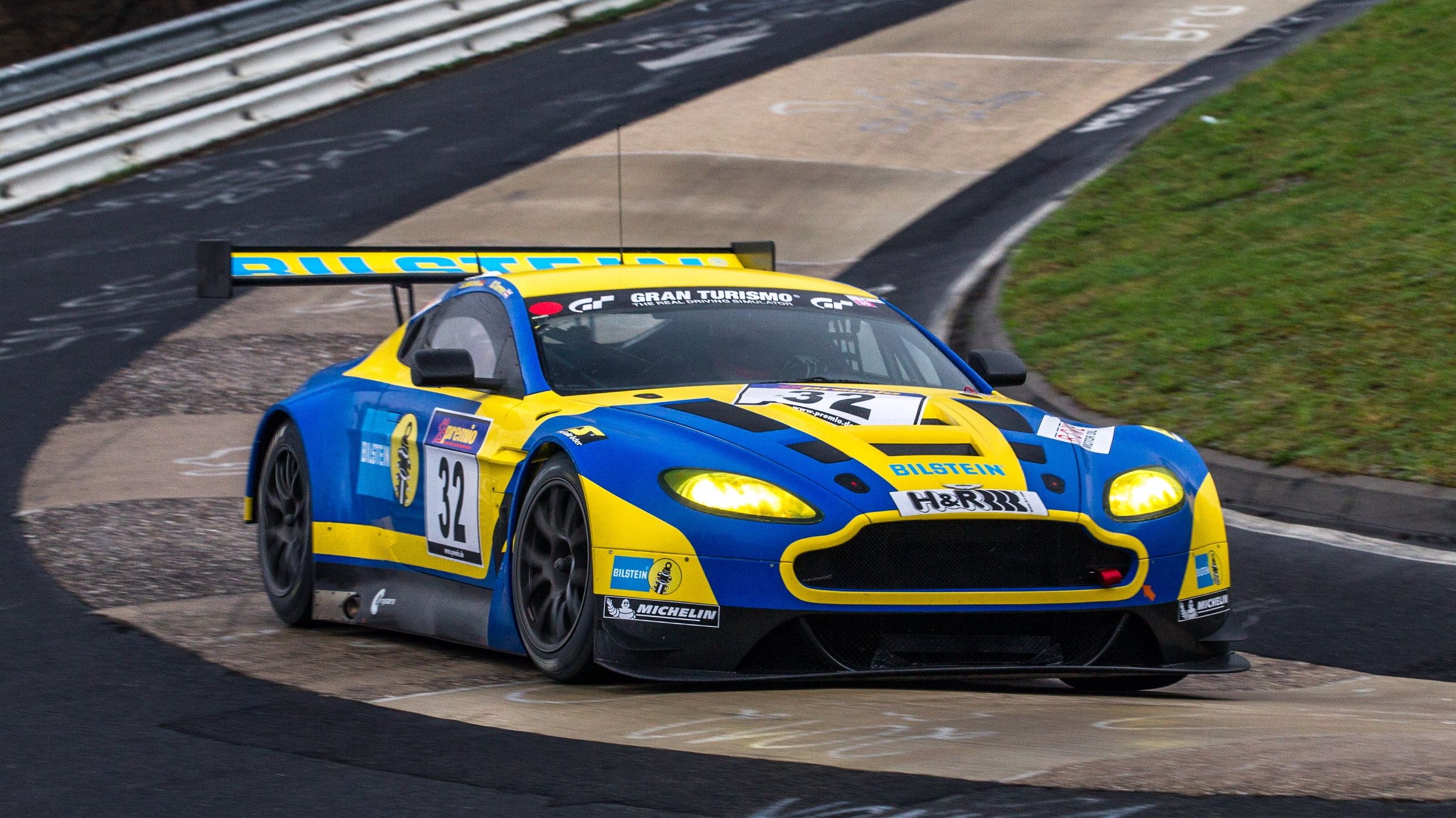Germany's motorsport governing body (DMSB) has lifted the ban on GT3 cars that was introduced on the Nurburgring->ke999 track following last month's crash, which killed a spectator and left many injured. The tragedy occurred when a Nissan GT-R GT3 took off at the Flugplatz and flipped over the debris fence, crashing into a group of spectators. The DMSB issued a red flag and then announced a ban on the more powerful cars used in the series, including GT3 and GT4 racers, as well as special SPX prototypes. Although the ban on GT3 vehicles has now been lifted, cars from the top classes will be slowed down by a five percent reduction in engine power, effective immediately.
Additionally, speed limits of 124 mph several hundred yards before Flugplatz, Schwedenkreuz, and Antoniusbuche, as well as 155 mph on the Dottinger Hohe straight have been implemented to reduce the likelihood of cars becoming airborne. The new rules will be enforced by GPS->ke2857 monitoring and "drastic penalties" will be levied for those breaking the speed limit. Moreover, spectator access to Flugplatz, Schwedenkreuz, Metzgesfeld and Pflanzgarten areas will be restricted while changes are made to improve safety.
The restrictions will be in place until the DMSB and a team of experts come up with "medium-term solutions" that could include "comprehensive regulation changes" and a reconfiguration of the track, according to DMSB president and former racing driver Hans-Joachim Stuck.
It is not clear if the 24 Hours of Nurburgring race, scheduled to start on May 14th, will run as planned.
Continue reading to learn more about the 'Ring's new regulations.
Why it matters
While I'm not a fan of speed limits on the race track and I'm convinced such measures ruined a lot of historic venues, I agree that safety comes first. That said, these measures are undoubtedly called for, at least until the governing body in charge of German motorsport comes up with a solution. Sure, the said solution might bring unprecedented changes at the 'Ring, which could affect its beloved configuration, but fans will eventually get used to it. What's important here is that tragedies such as last month's crash become a thing of the past.
Nurburgring Nordschleife
The current Nurburgring Nordschleife is 12.93 miles long and consists of 154 turns, and more than 1,000 feet of elevation change from its lowest to highest points. The loop was last revised in 1983, when its length was shortened from 14.18 miles. The circuit is being used for various racing events and as a testing area by manufacturers. The complex also hosts open days during which amateur drivers can test their skills and cars.

